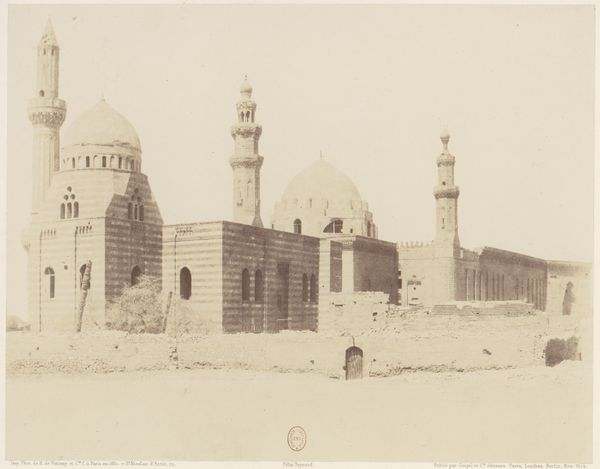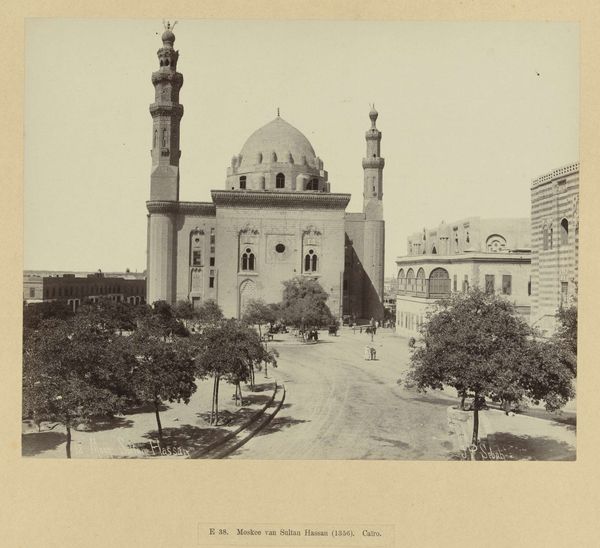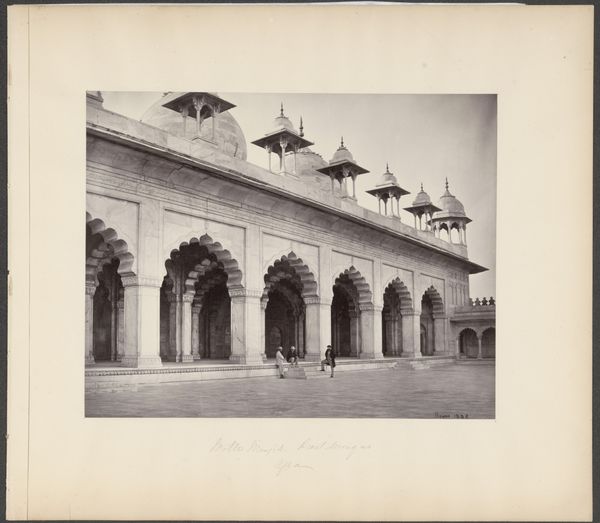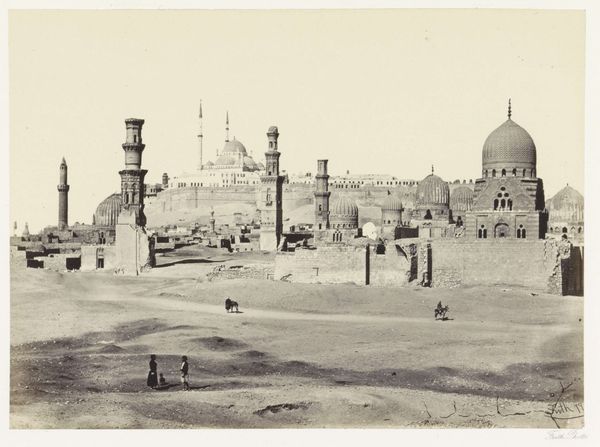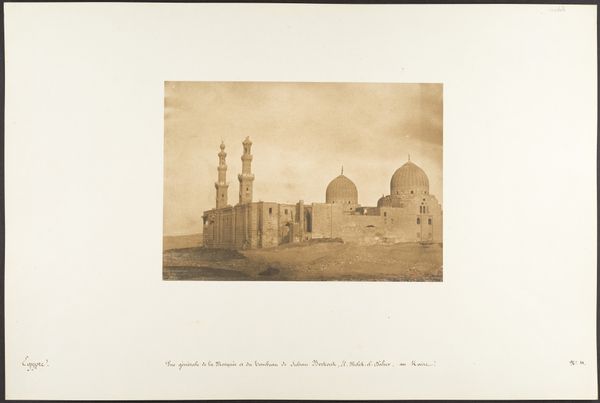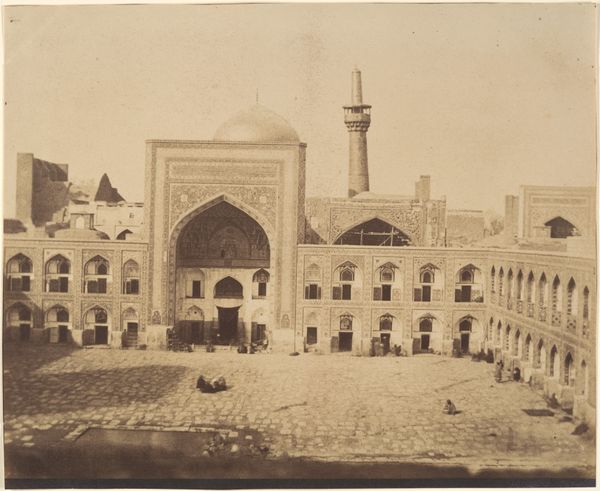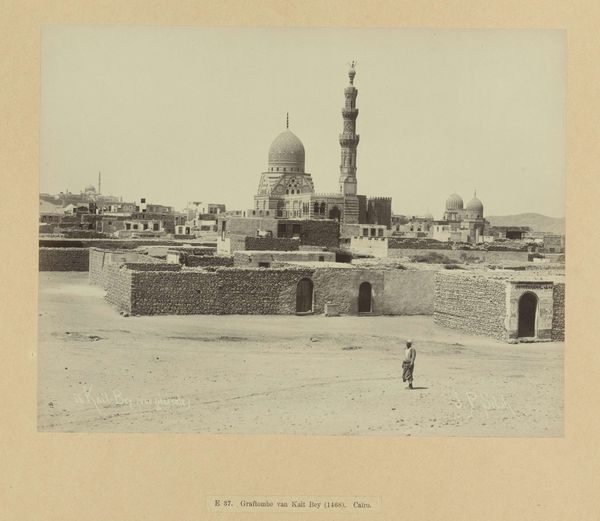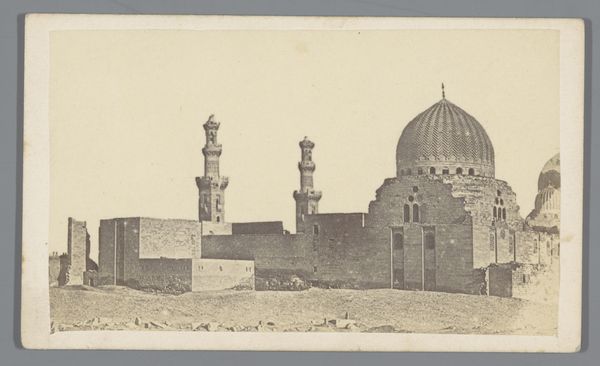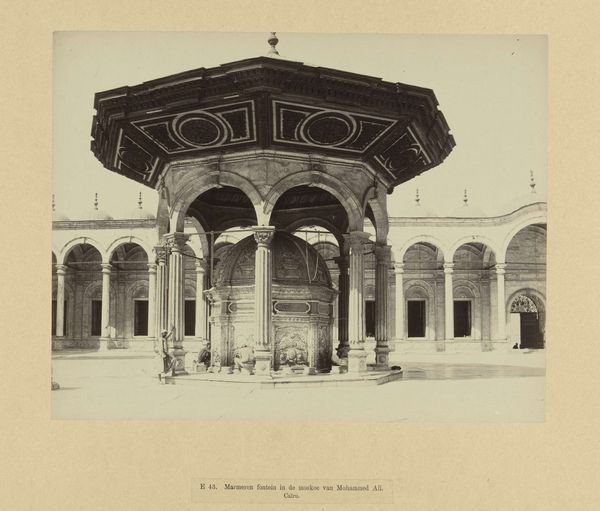
photography, architecture
#
landscape
#
photography
#
historical photography
#
19th century
#
islamic-art
#
architecture
Dimensions: height 209 mm, width 266 mm, height 469 mm, width 558 mm
Copyright: Rijks Museum: Open Domain
Editor: This photograph, "Gezicht op de Ibn Toeloenmoskee, Caïro" by Jean Pascal Sébah, dating from the late 1880s to mid-1890s, offers such a desolate view. I am curious about what a photograph like this communicates. How do you interpret this work? Curator: Immediately, I see a moment frozen in time, laden with cultural significance. The mosque itself is a powerful symbol, isn't it? Constructed in the 9th century, the Ibn Tulun Mosque carries echoes of ancient Islamic artistry and ingenuity. Yet, note the seemingly lonely figure standing within its courtyard and the signs of construction and possible damage to parts of the mosque, which give an emotional complexity to the image. It suggests resilience, doesn't it, or perhaps even challenges in maintaining these important places. Editor: Yes, it seems so austere! But why take a picture of what might be interpreted as a damaged or unfinished place? Curator: That's key. Think about how 19th-century photography often documented monumental sites, serving as records of both cultural heritage and, sometimes, colonial endeavors. Sébah's lens doesn’t just capture architecture; it captures the psychological weight of history itself. These old mosques have significant memories contained within their structures for local worshippers and artists. Editor: It's amazing to think how much symbolism a single image can convey. Curator: Precisely! Photography immortalizes a particular view or perspective of cultural places which have emotional value. The medium itself adds layers of meaning. Editor: I see. So the photograph operates on several levels – as art, documentation, and historical symbol. That's insightful! Curator: Glad to open that vista of interpretation. I find the blending of art and history always provides the most powerful connection to art.
Comments
No comments
Be the first to comment and join the conversation on the ultimate creative platform.
